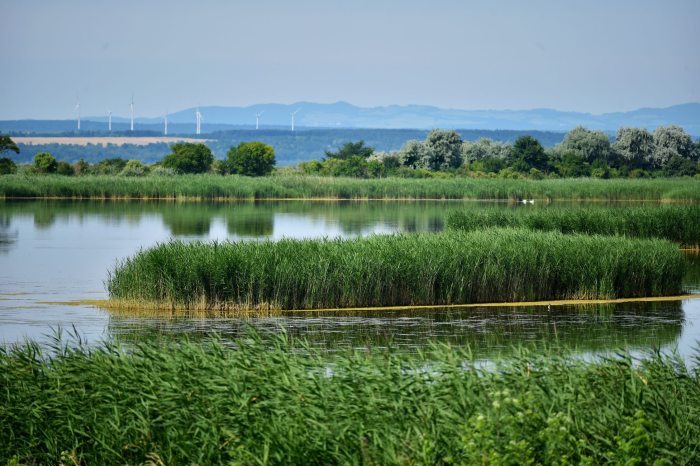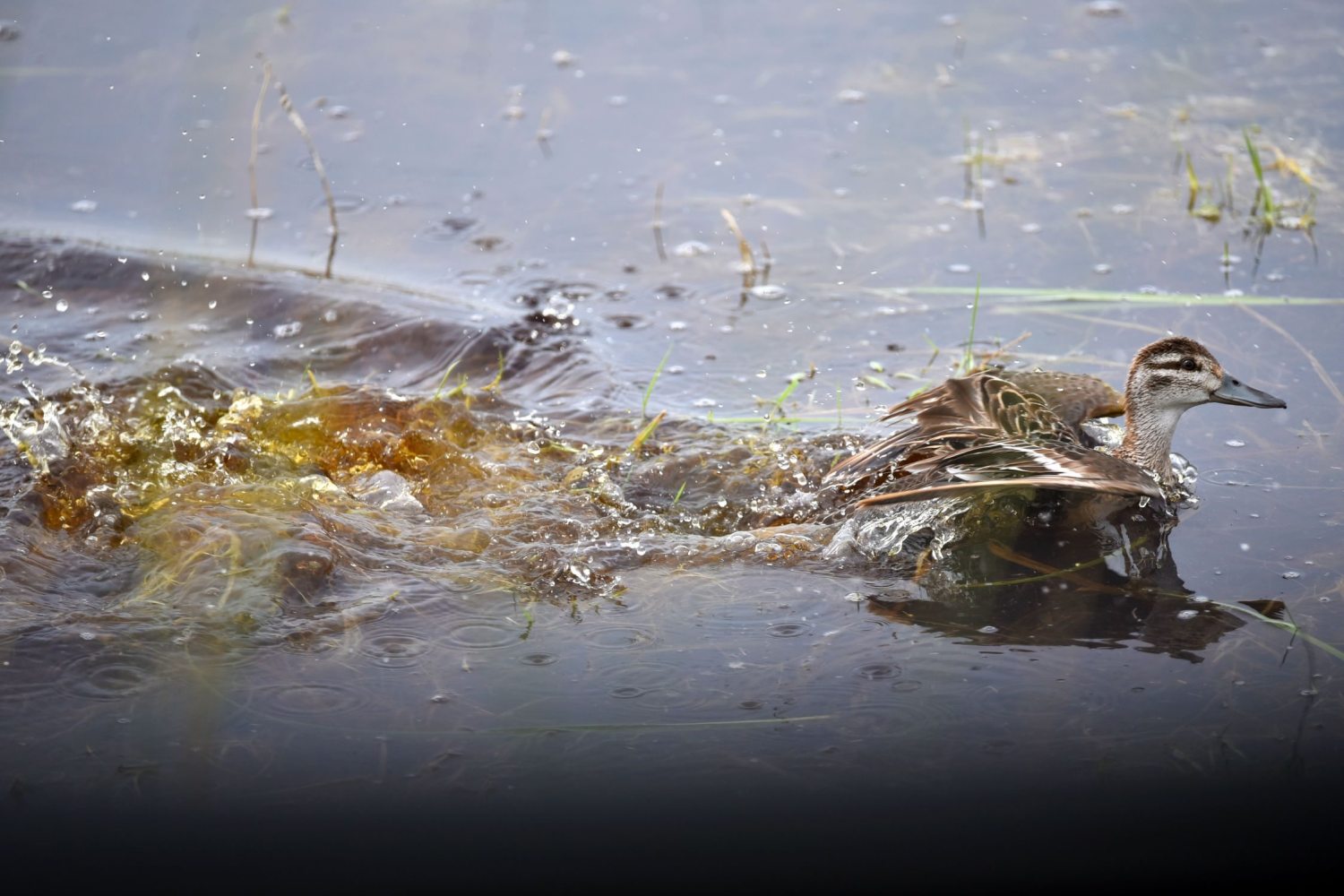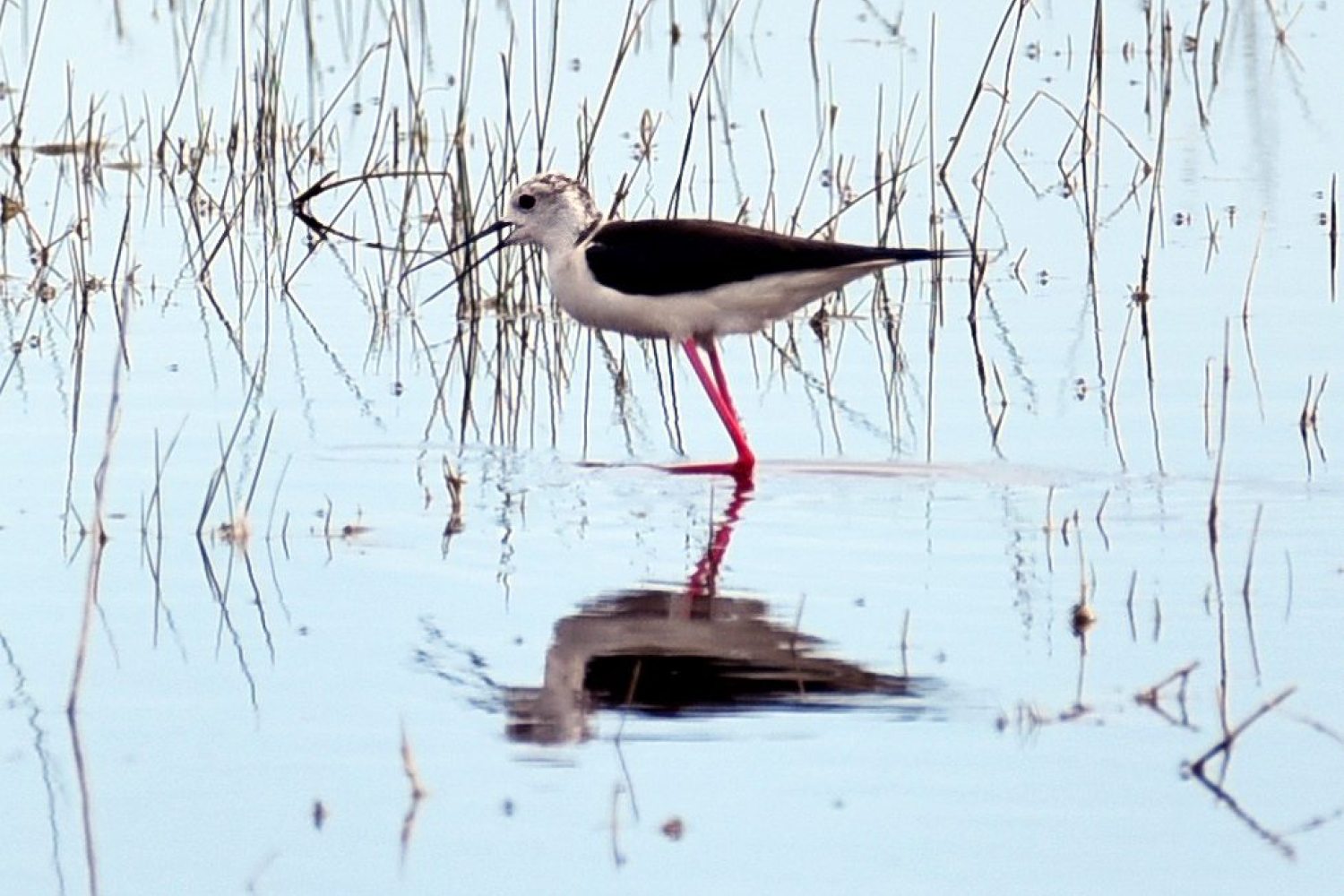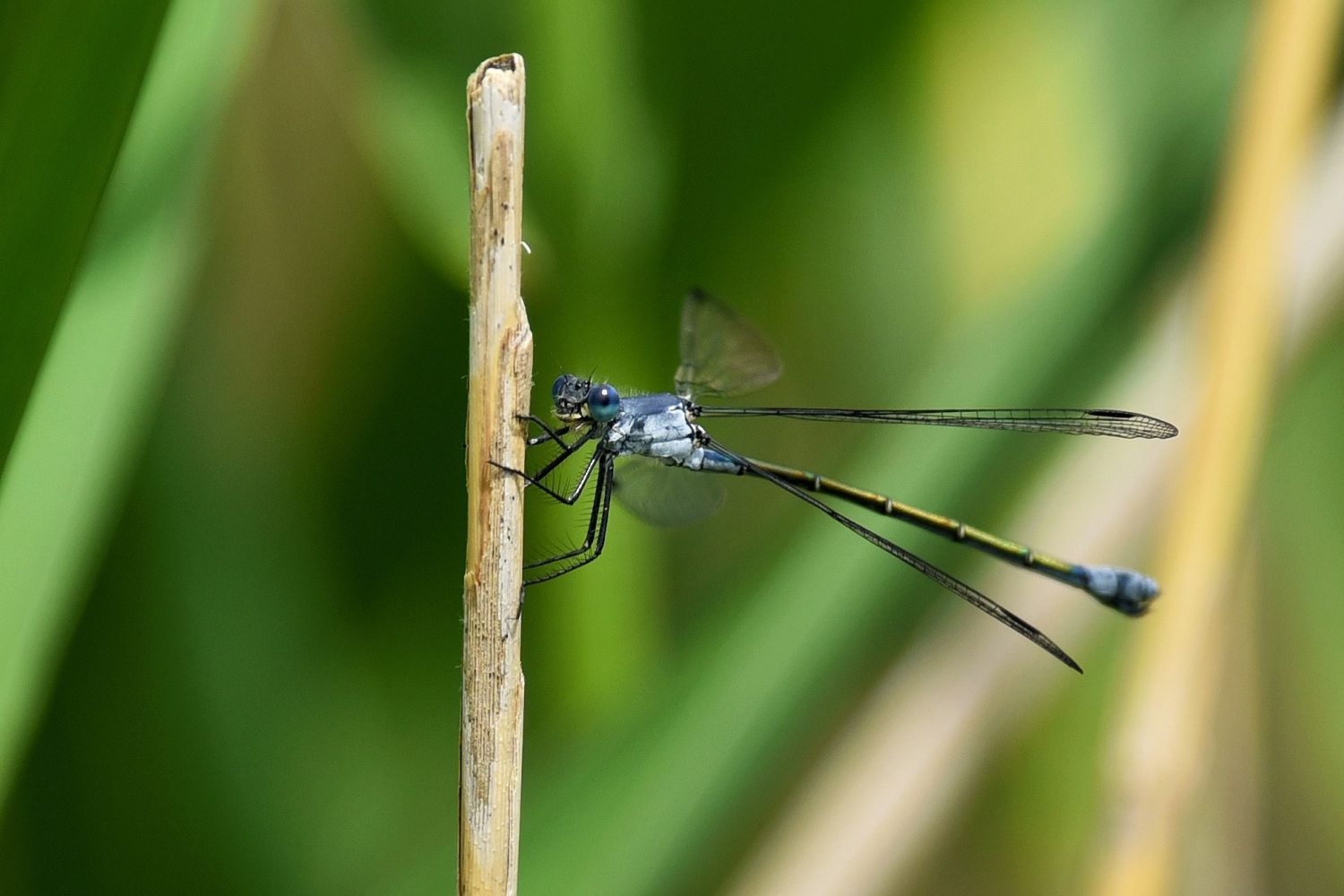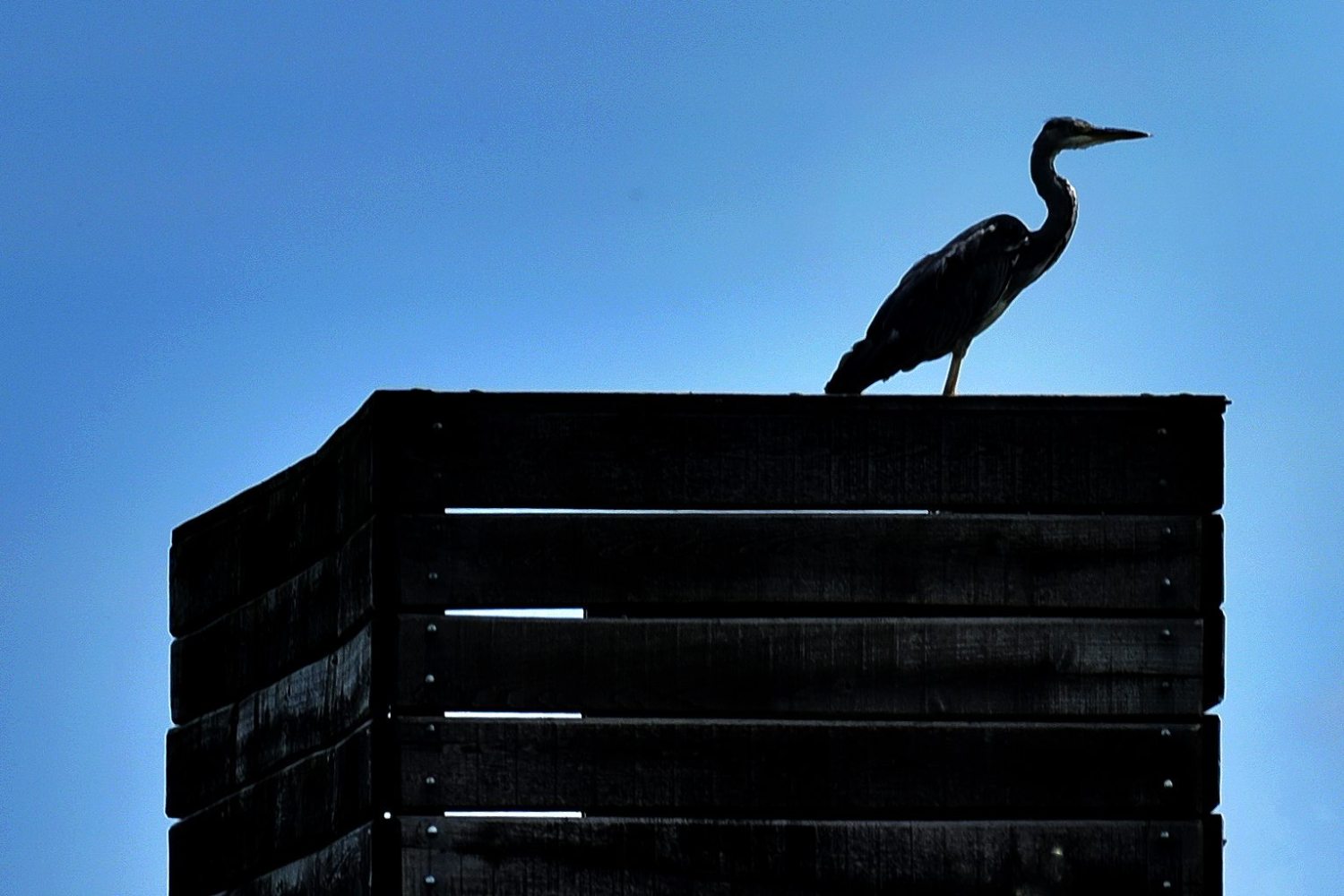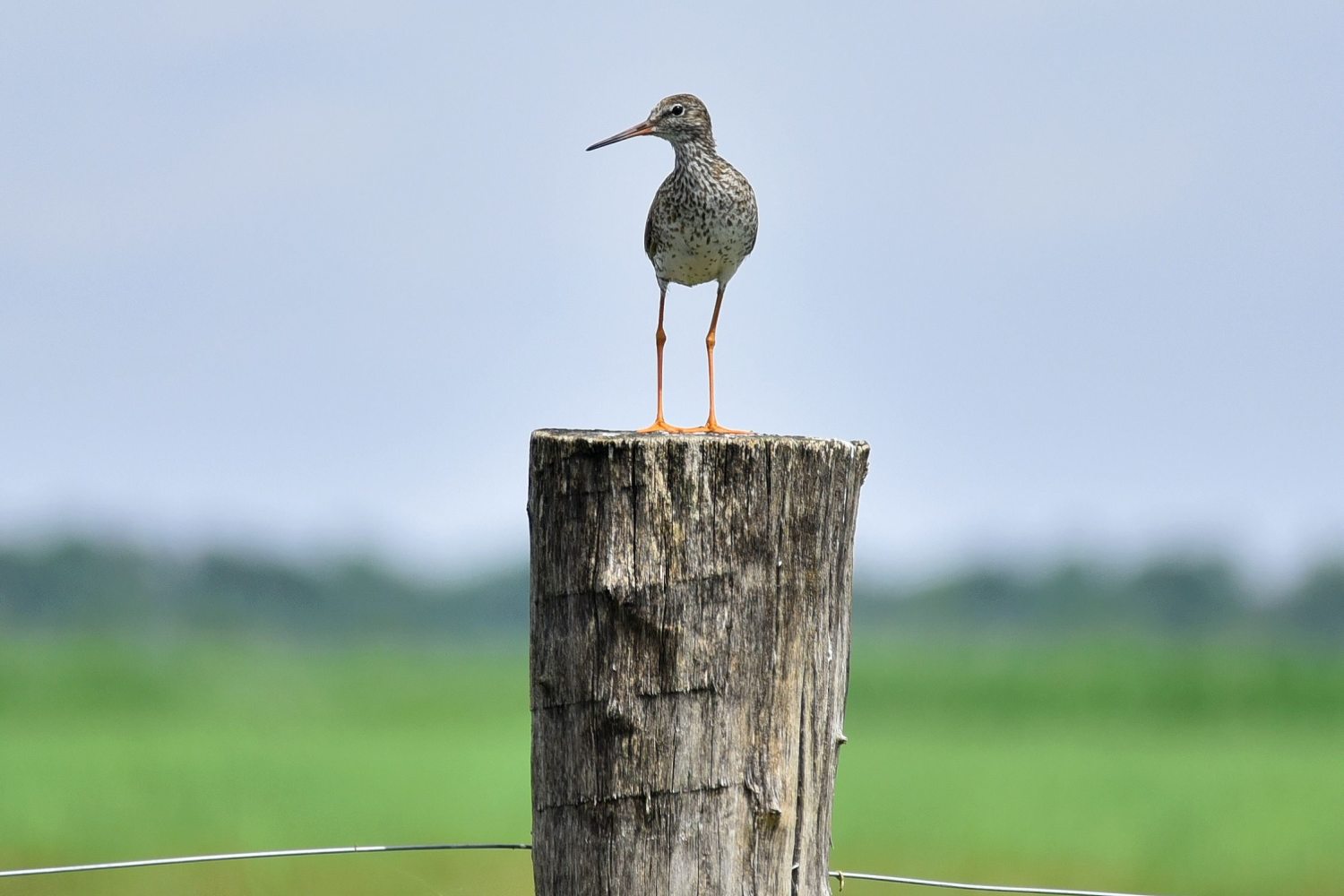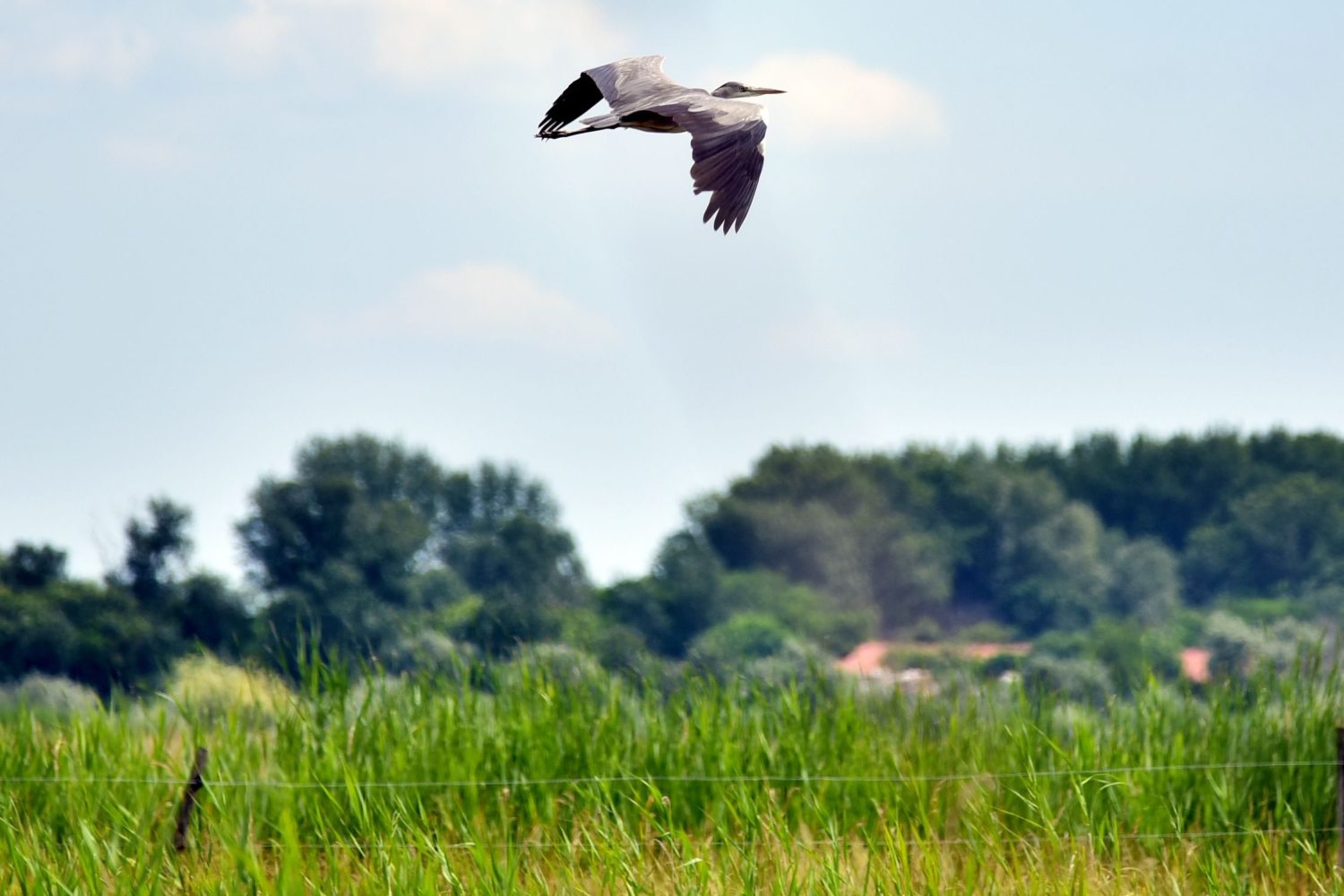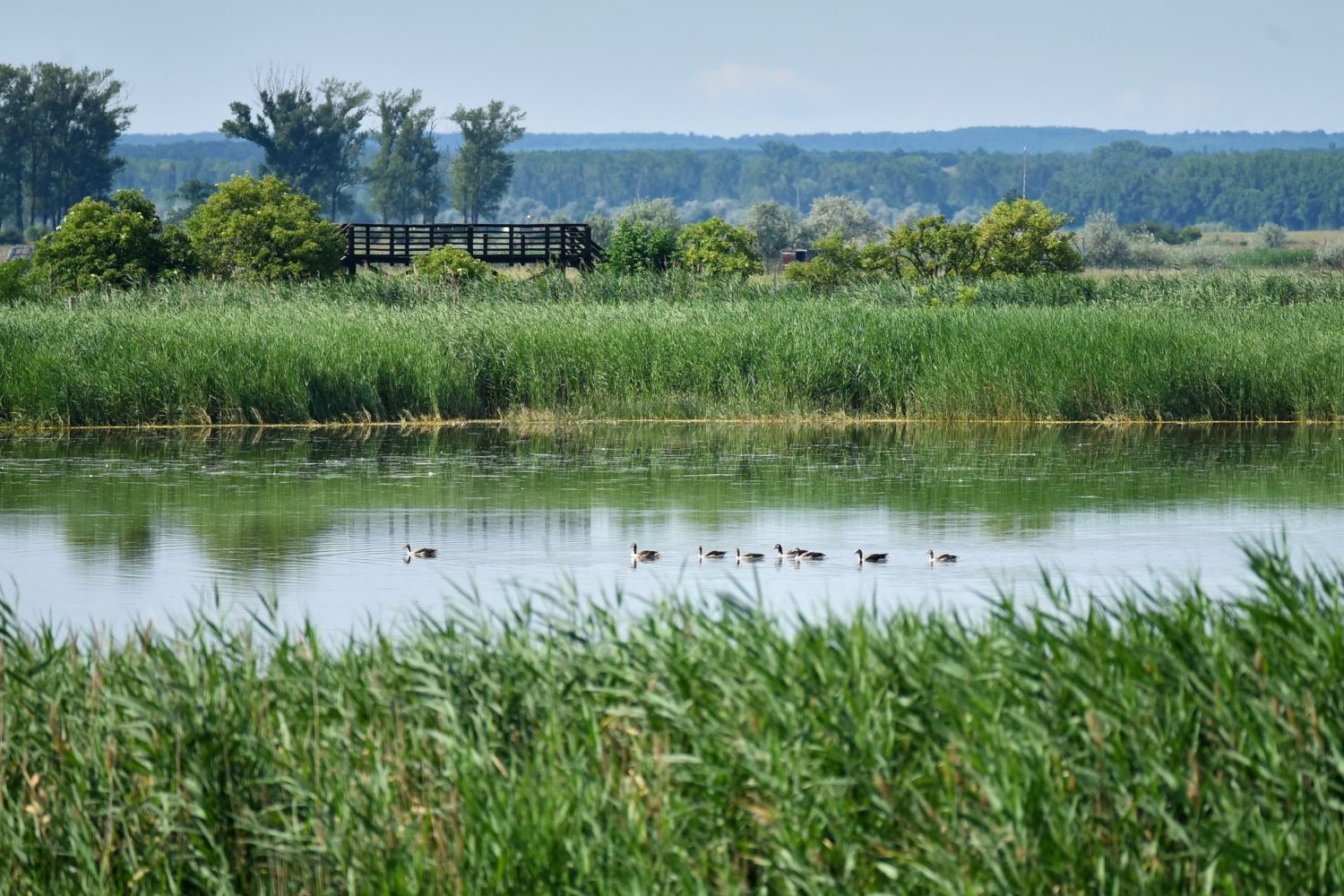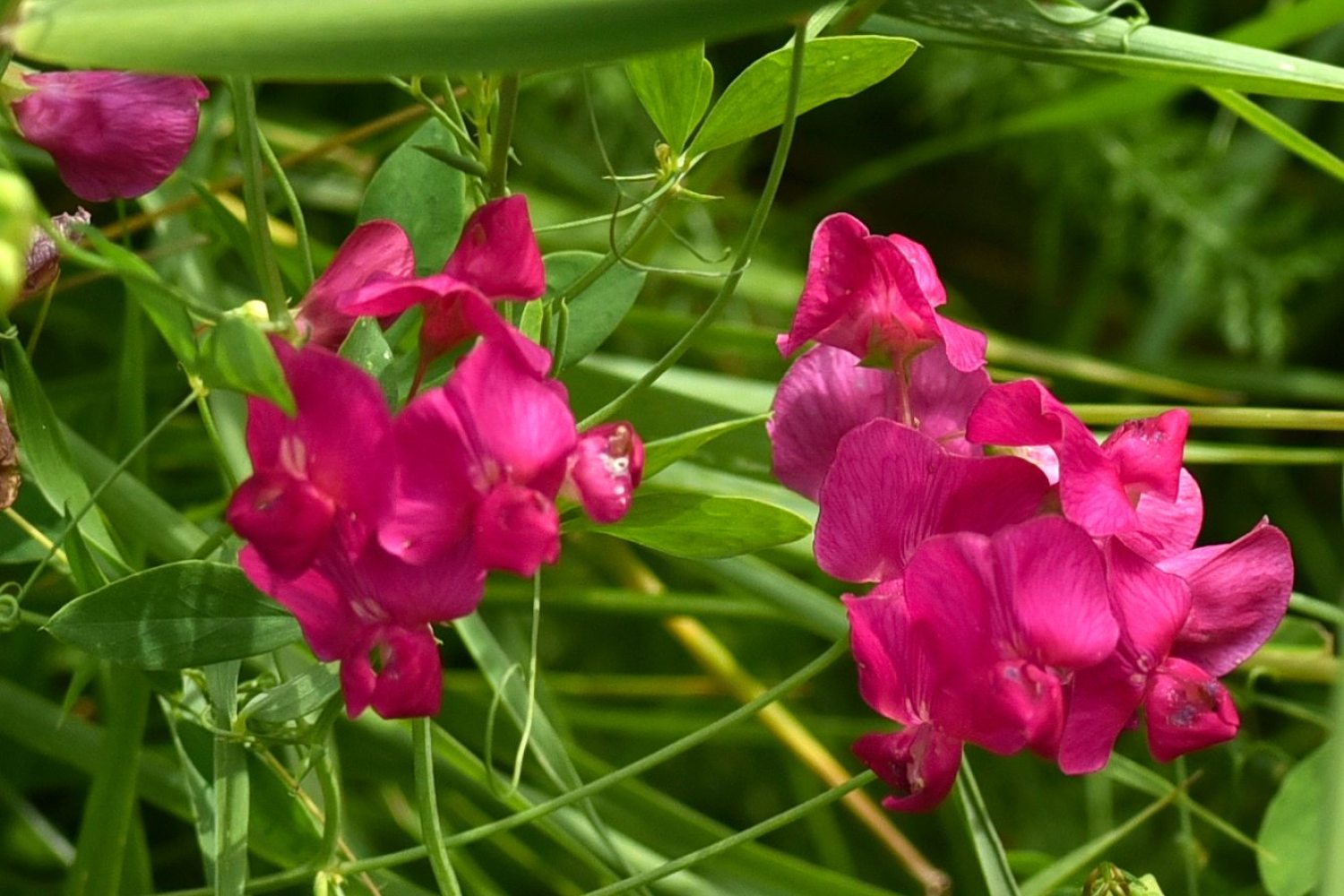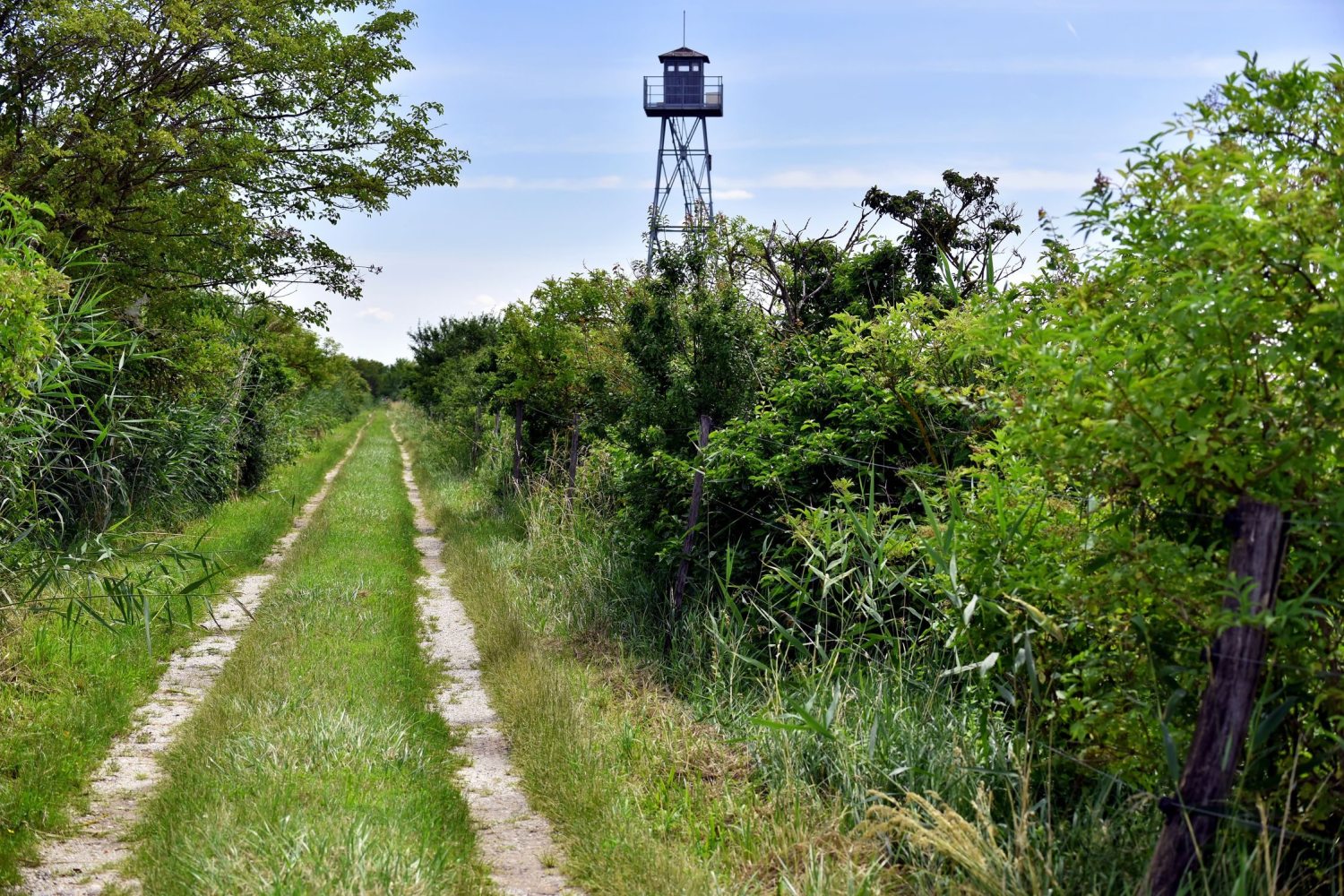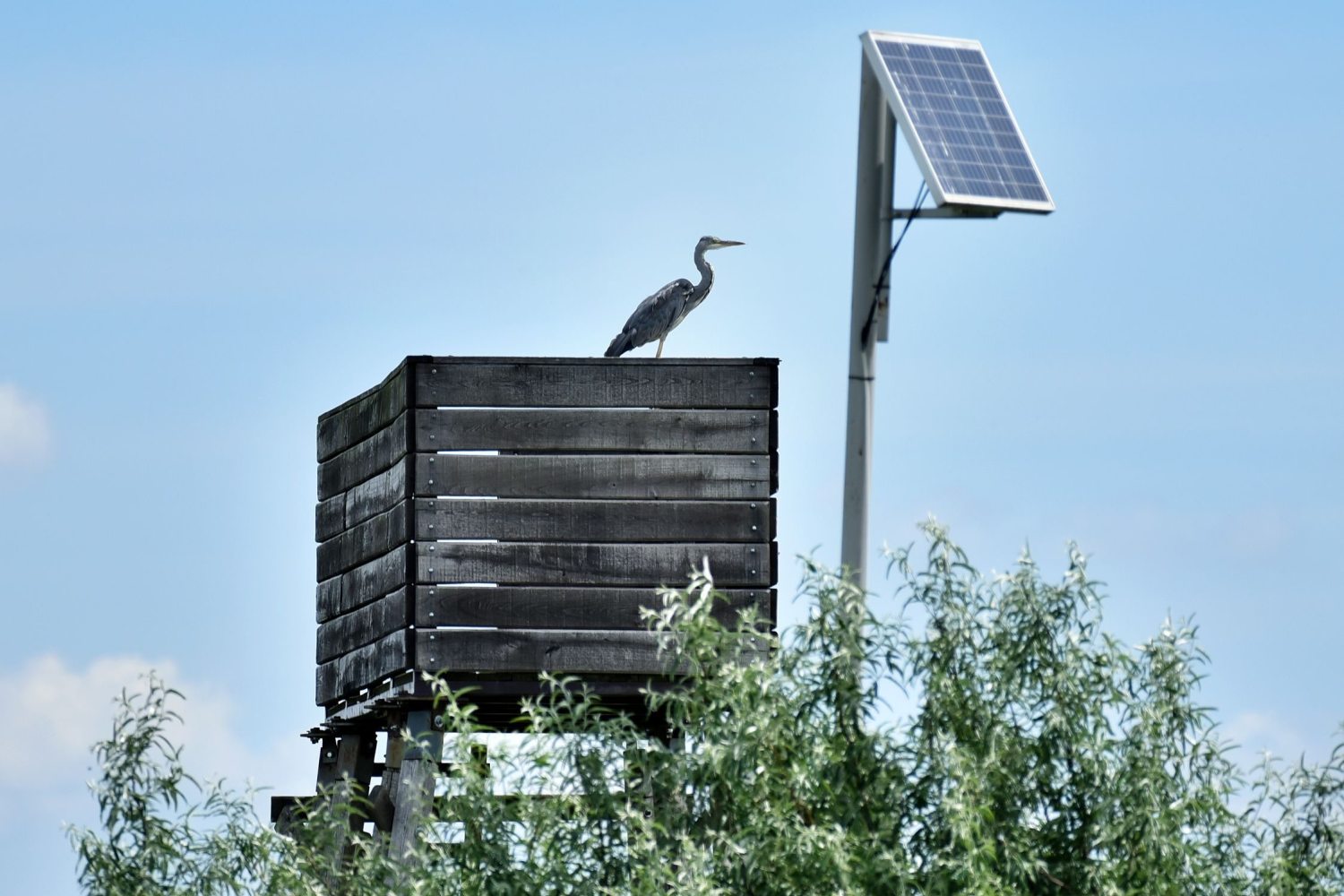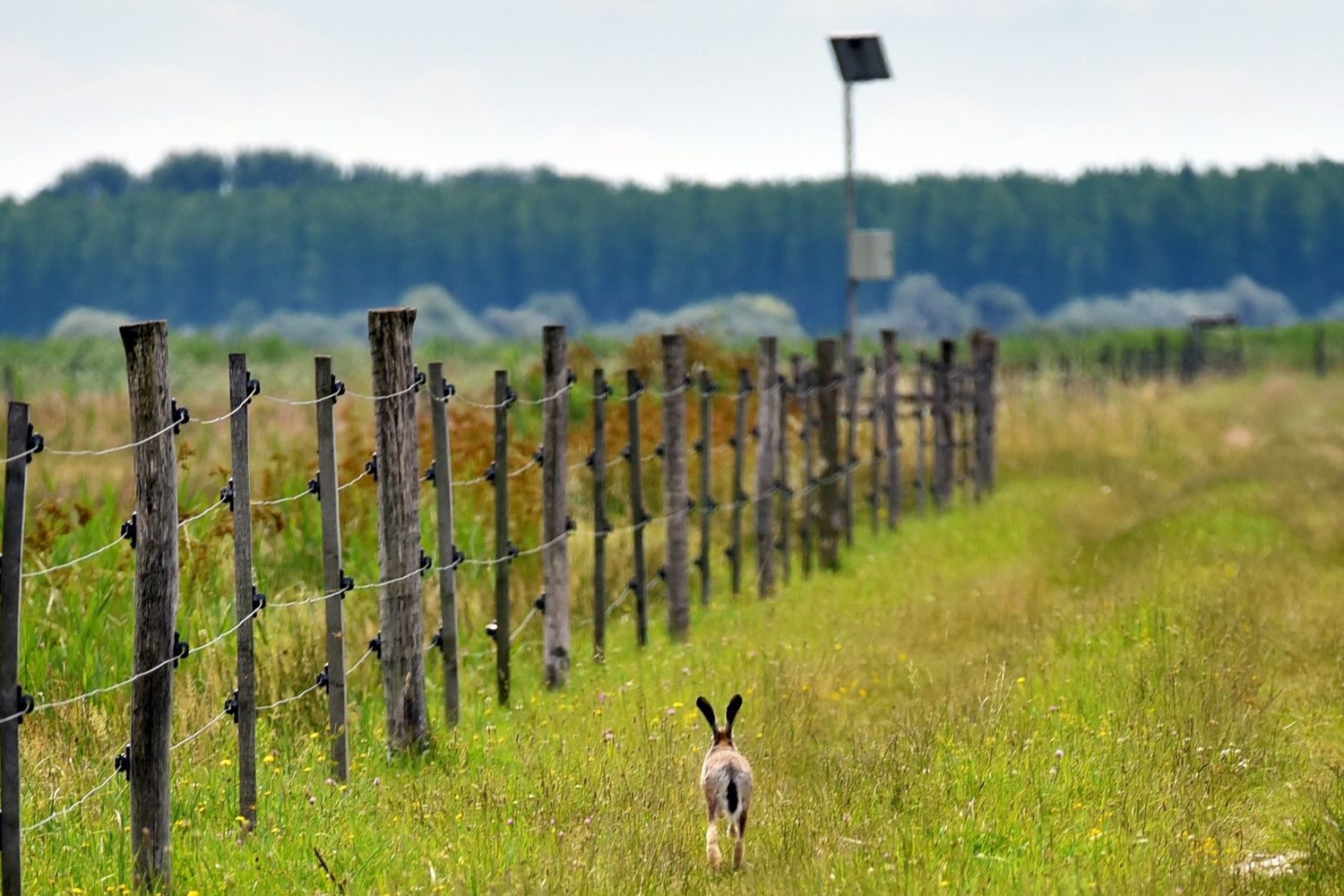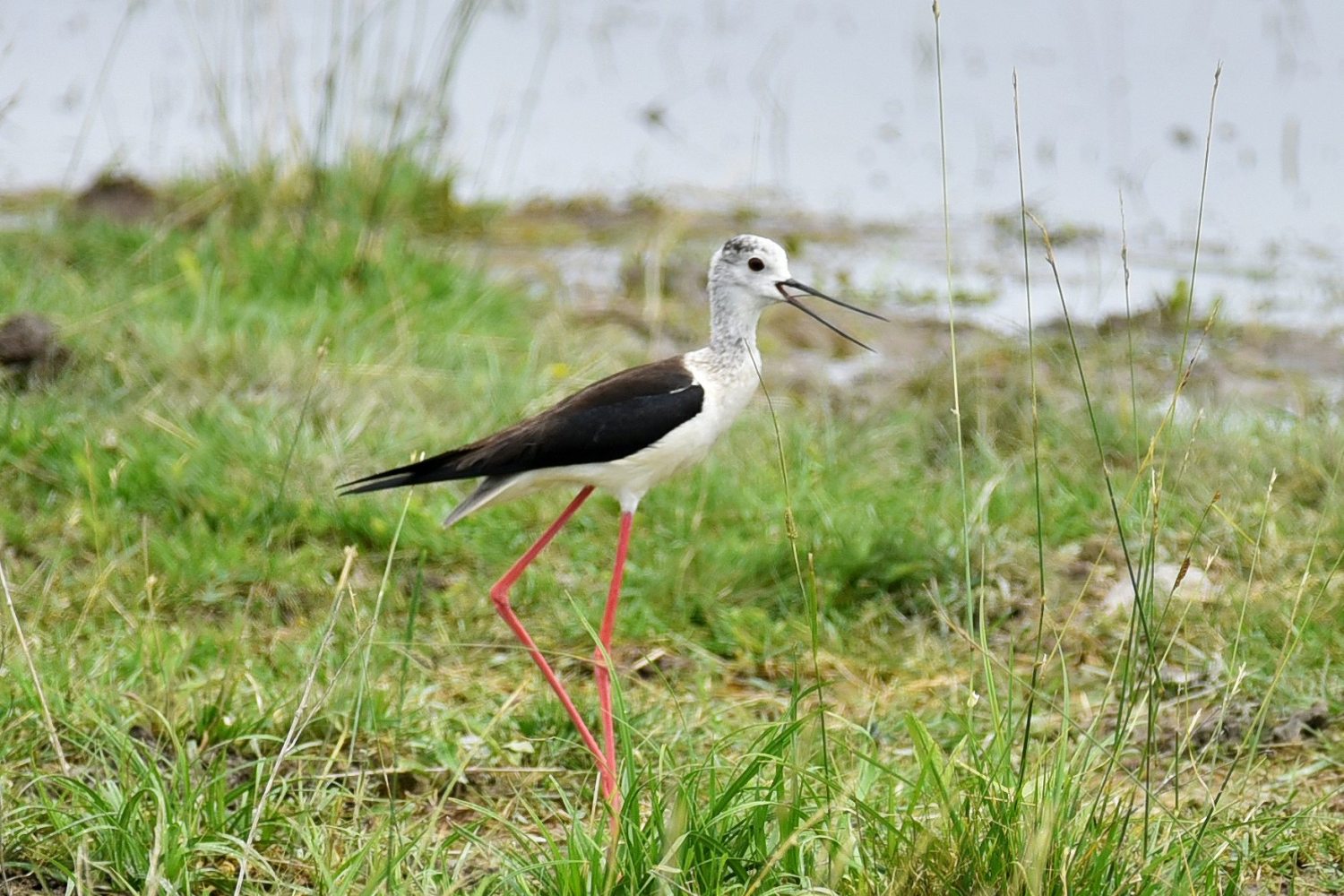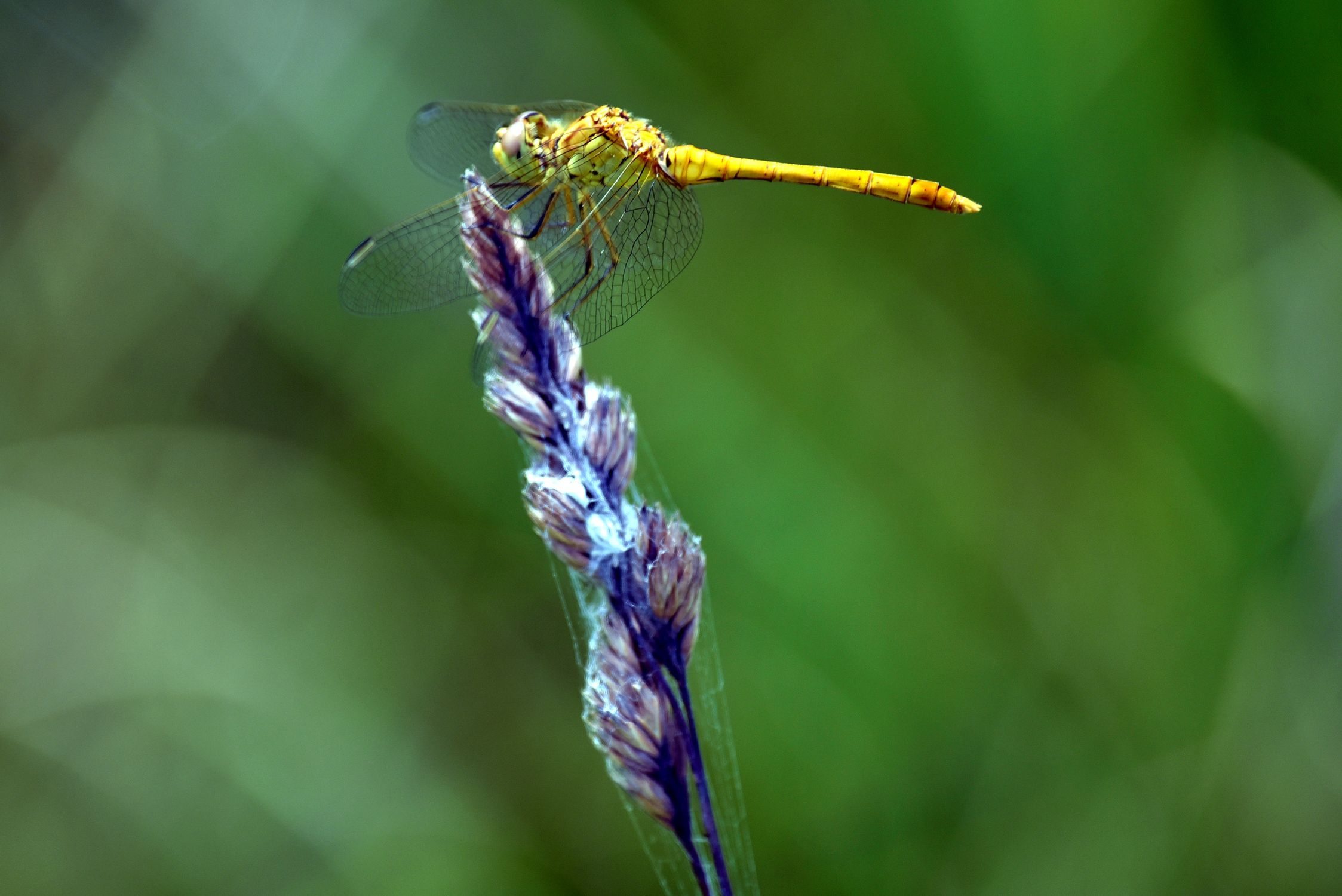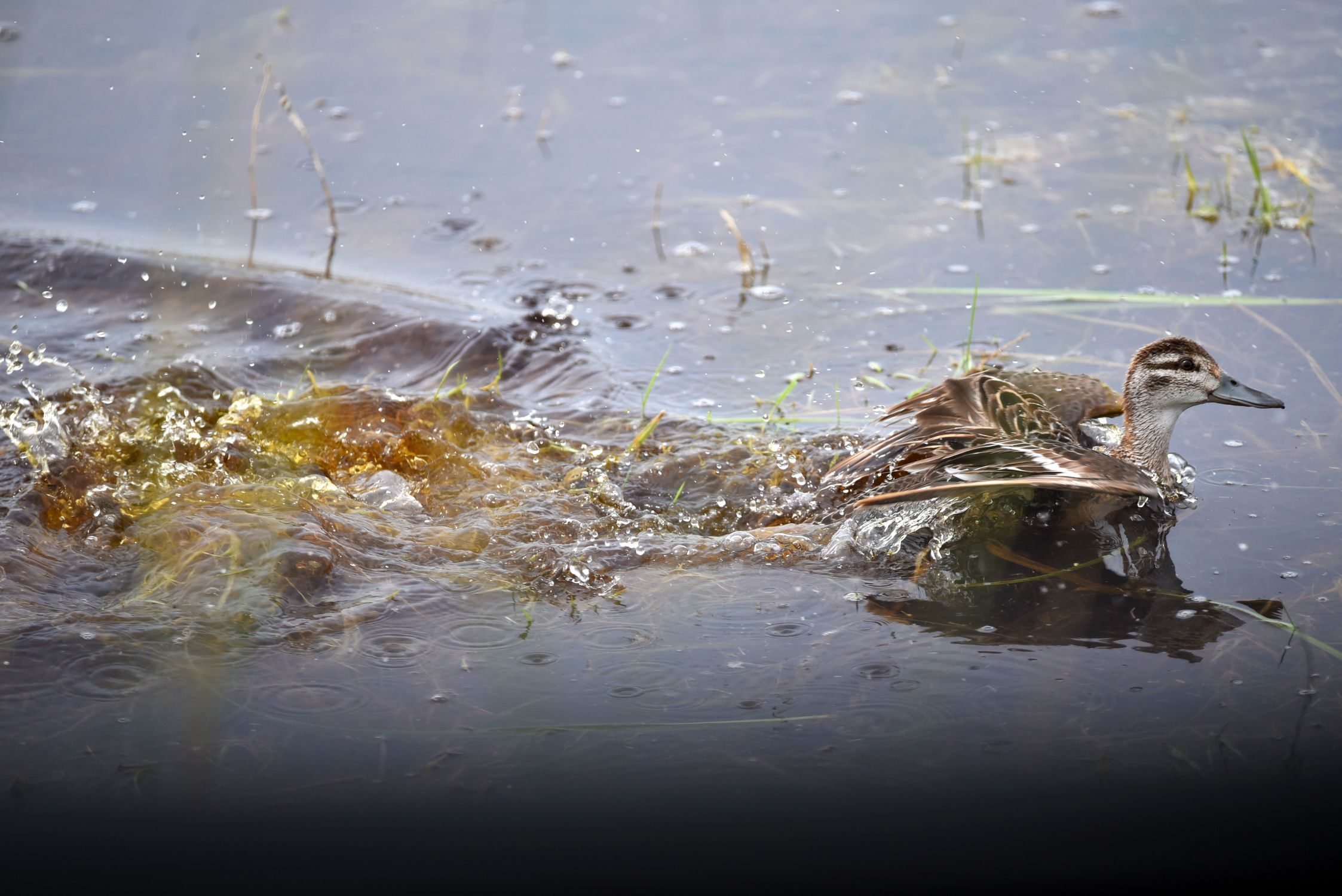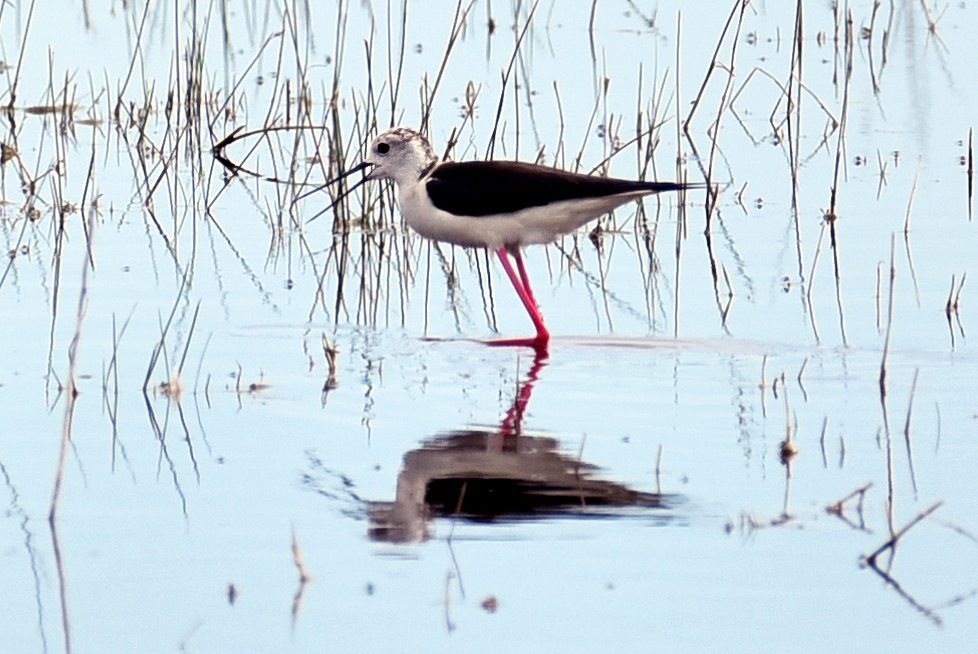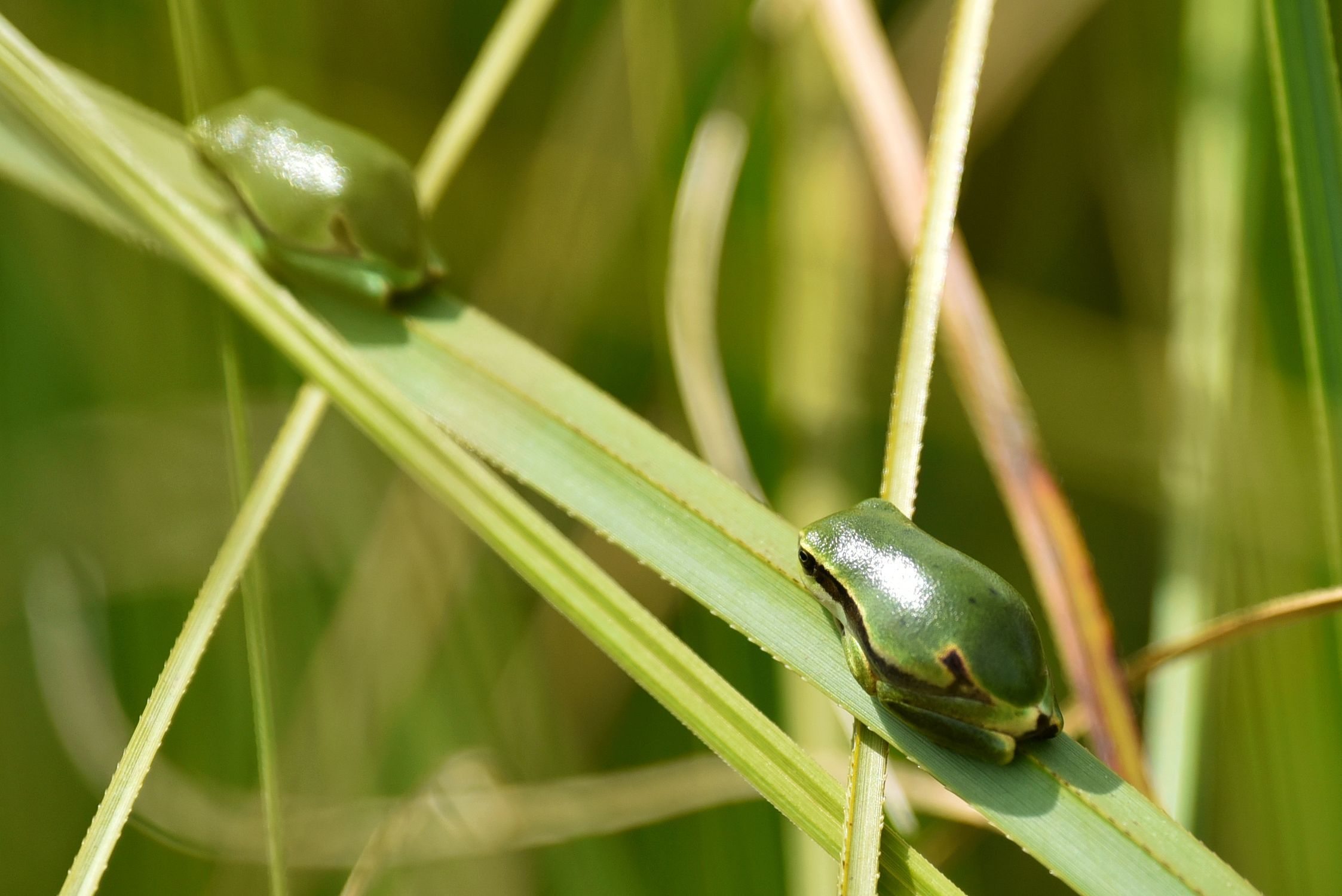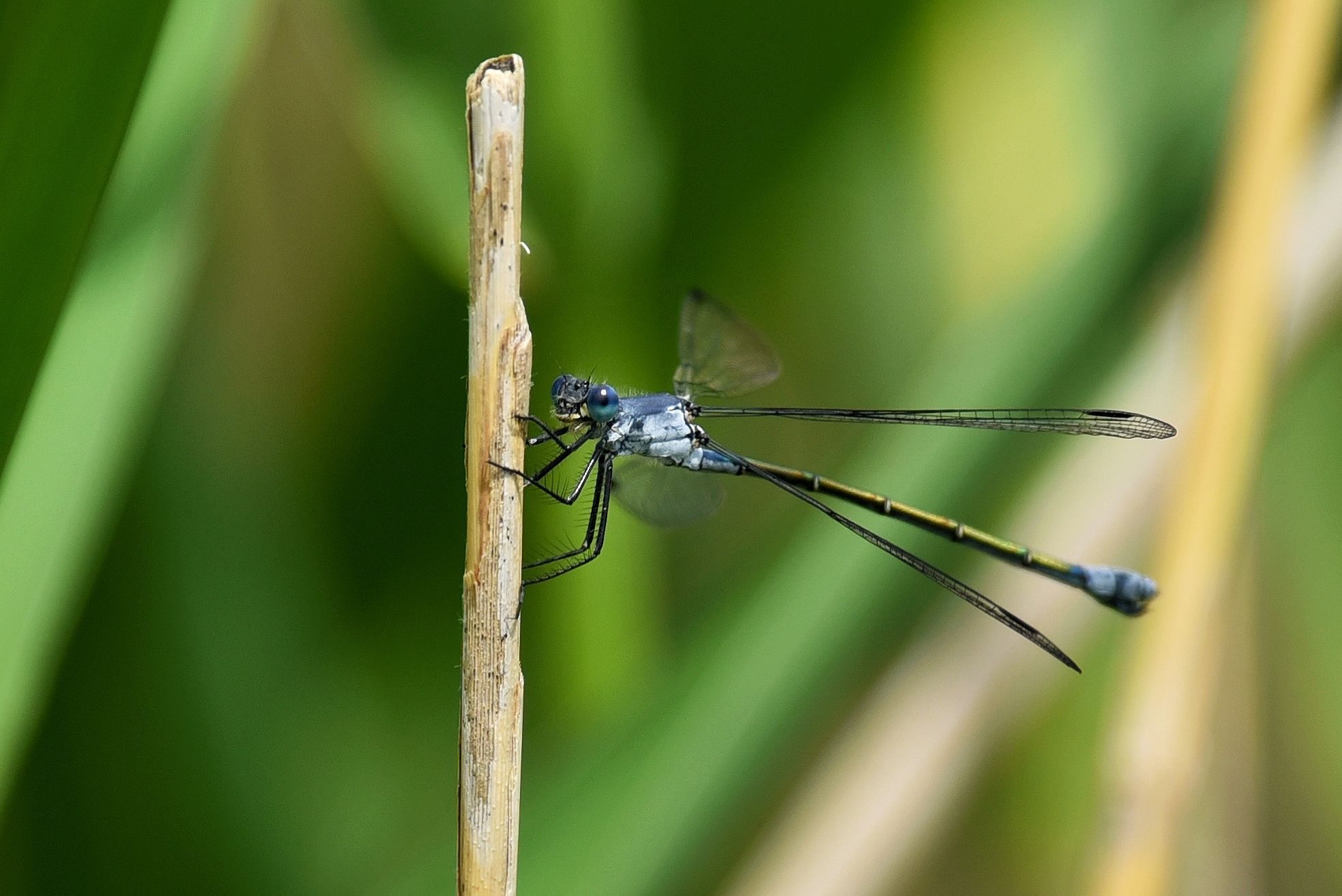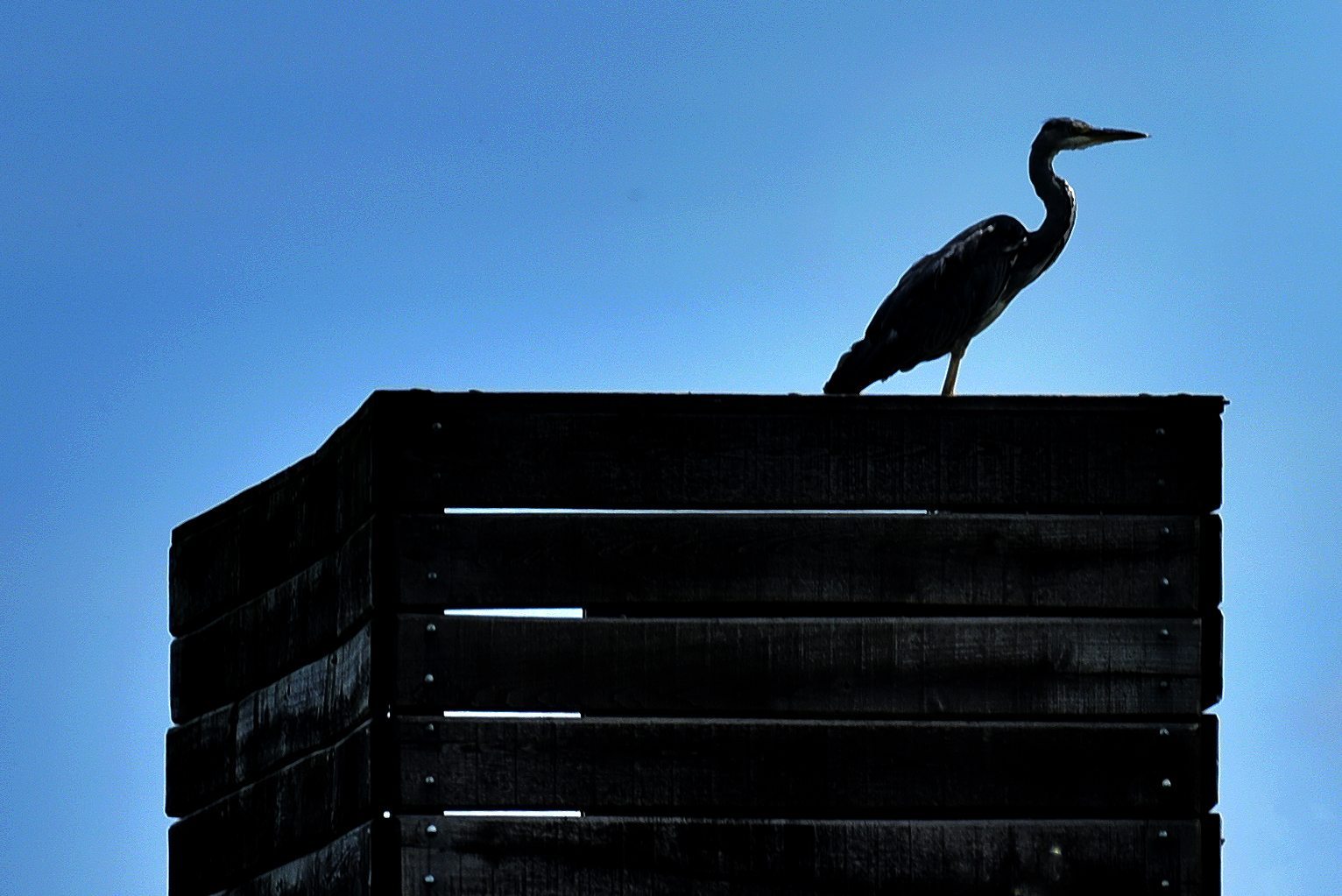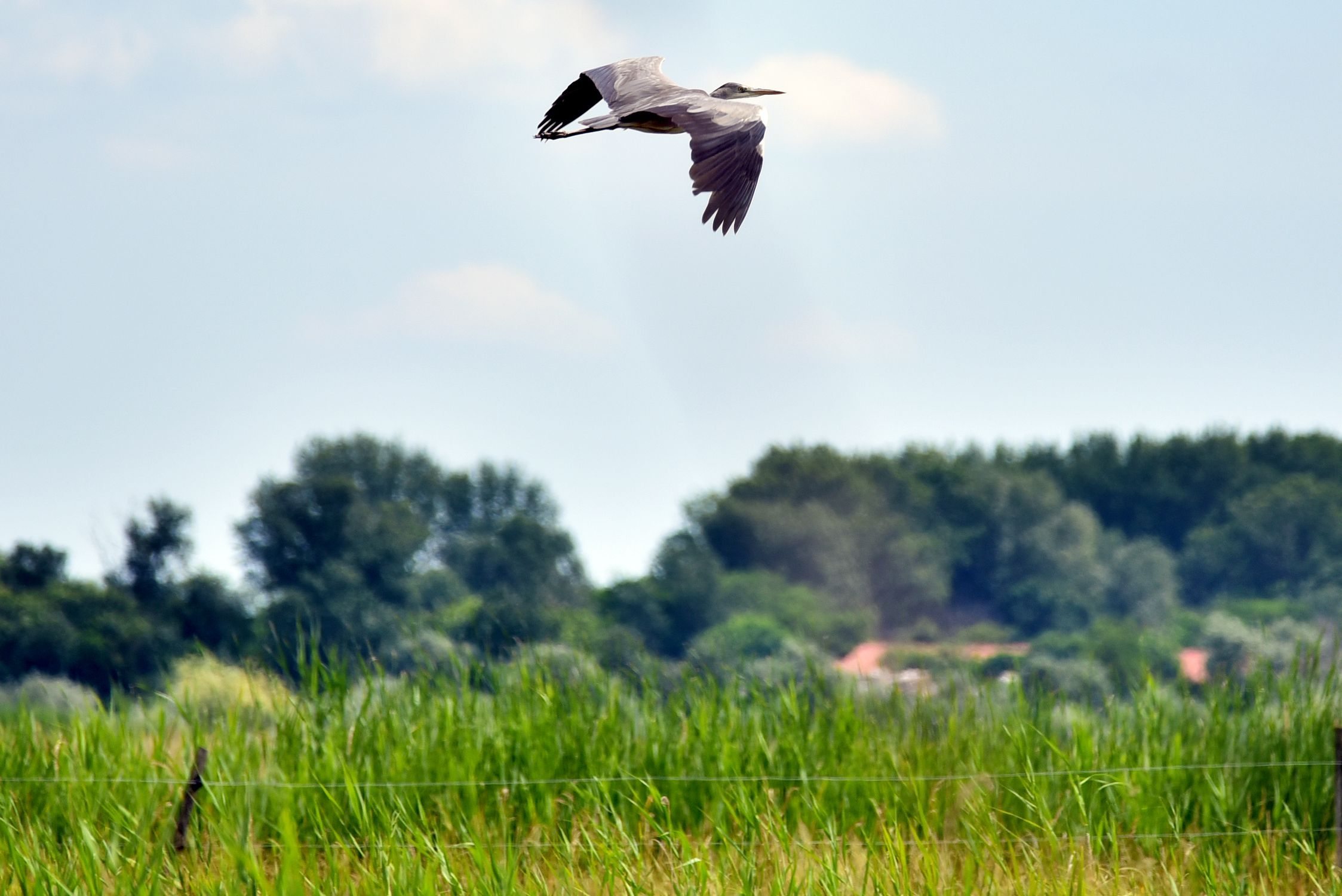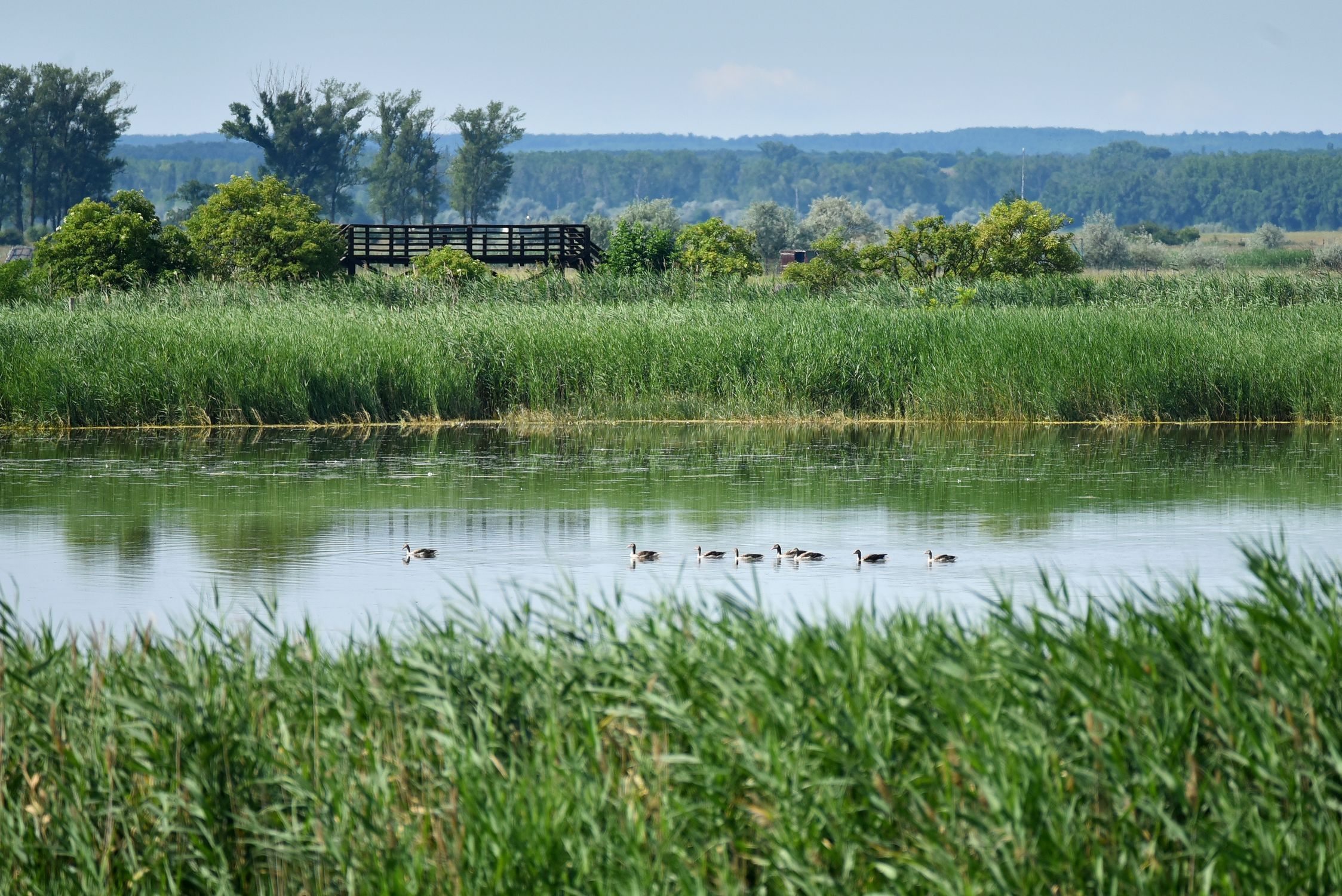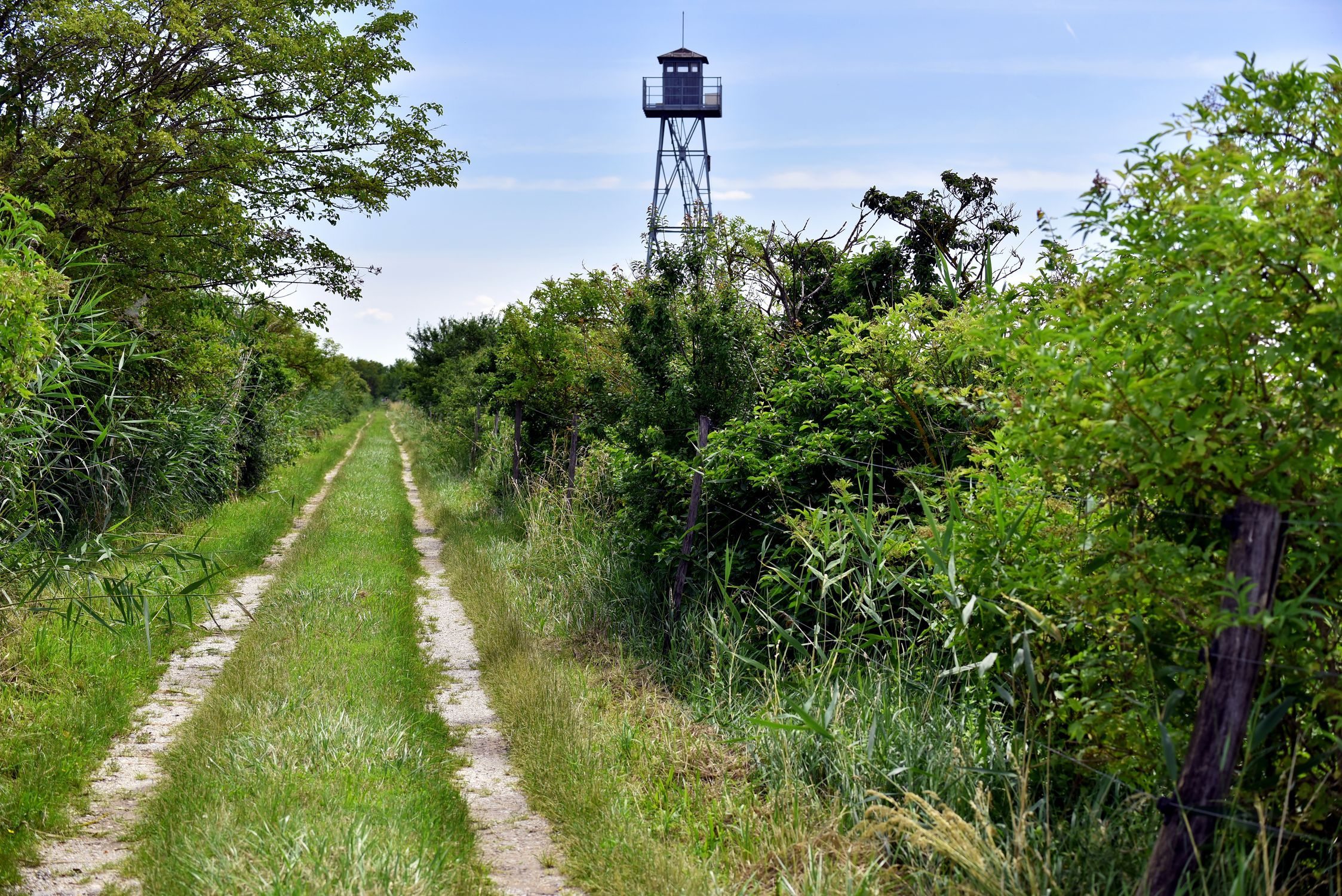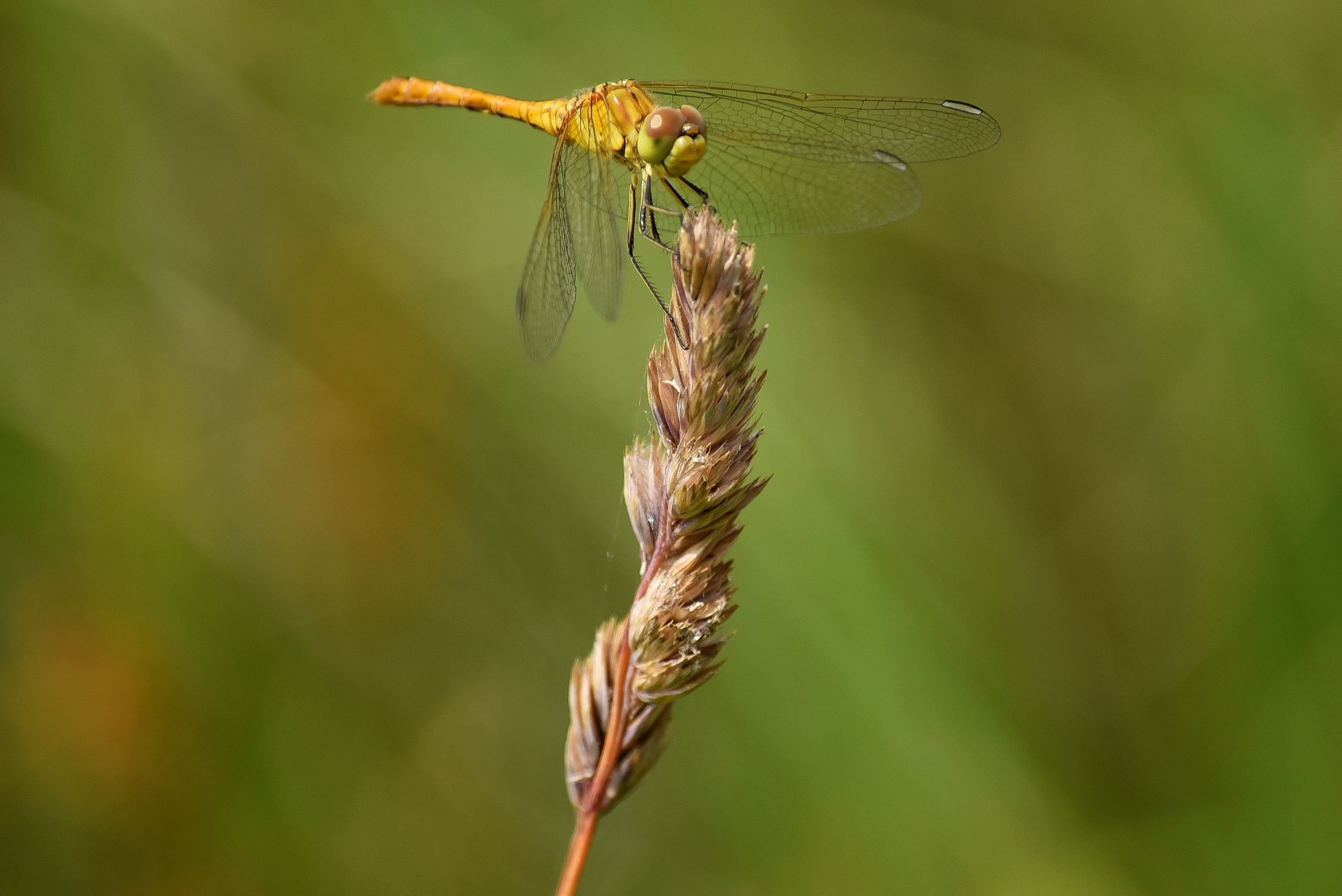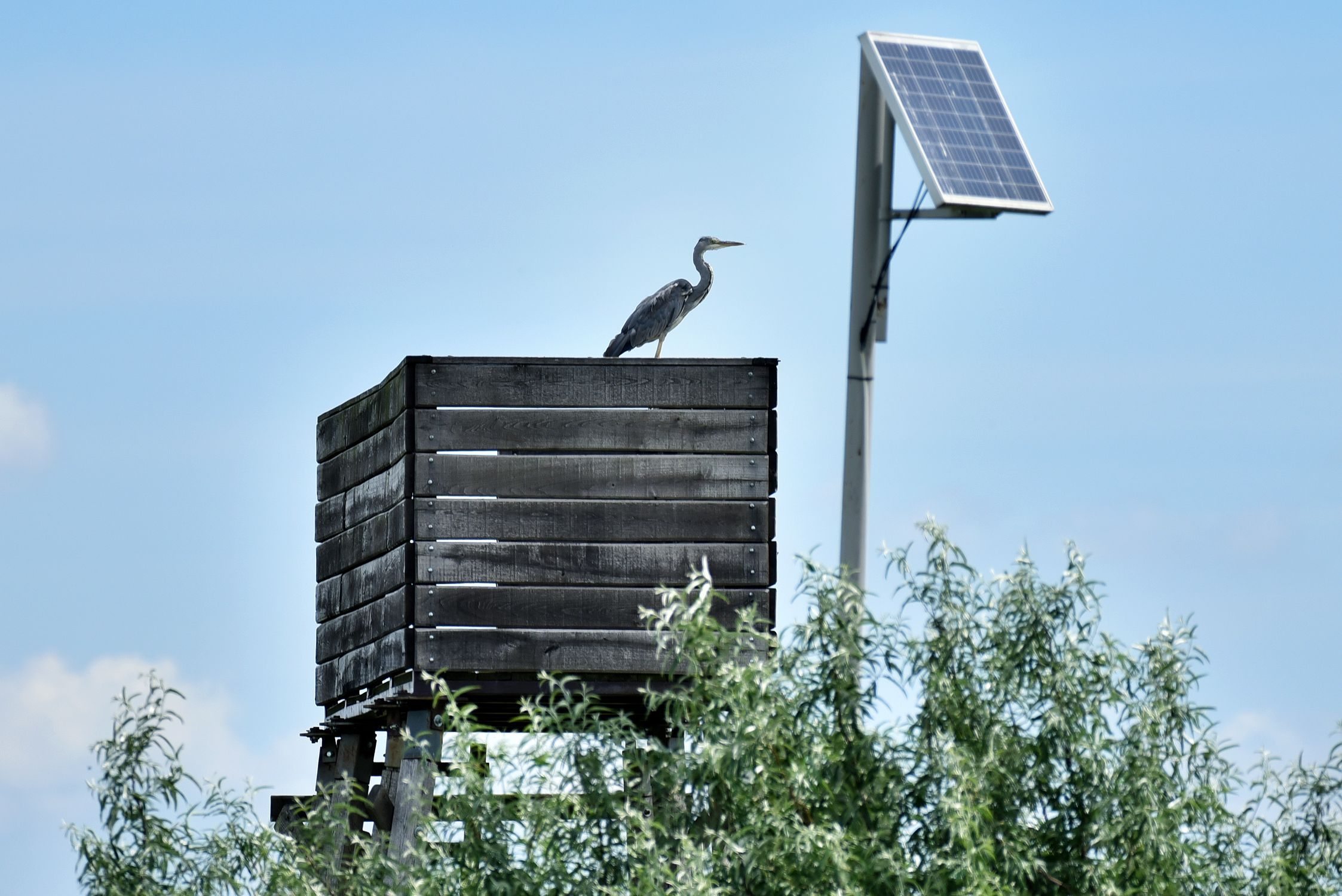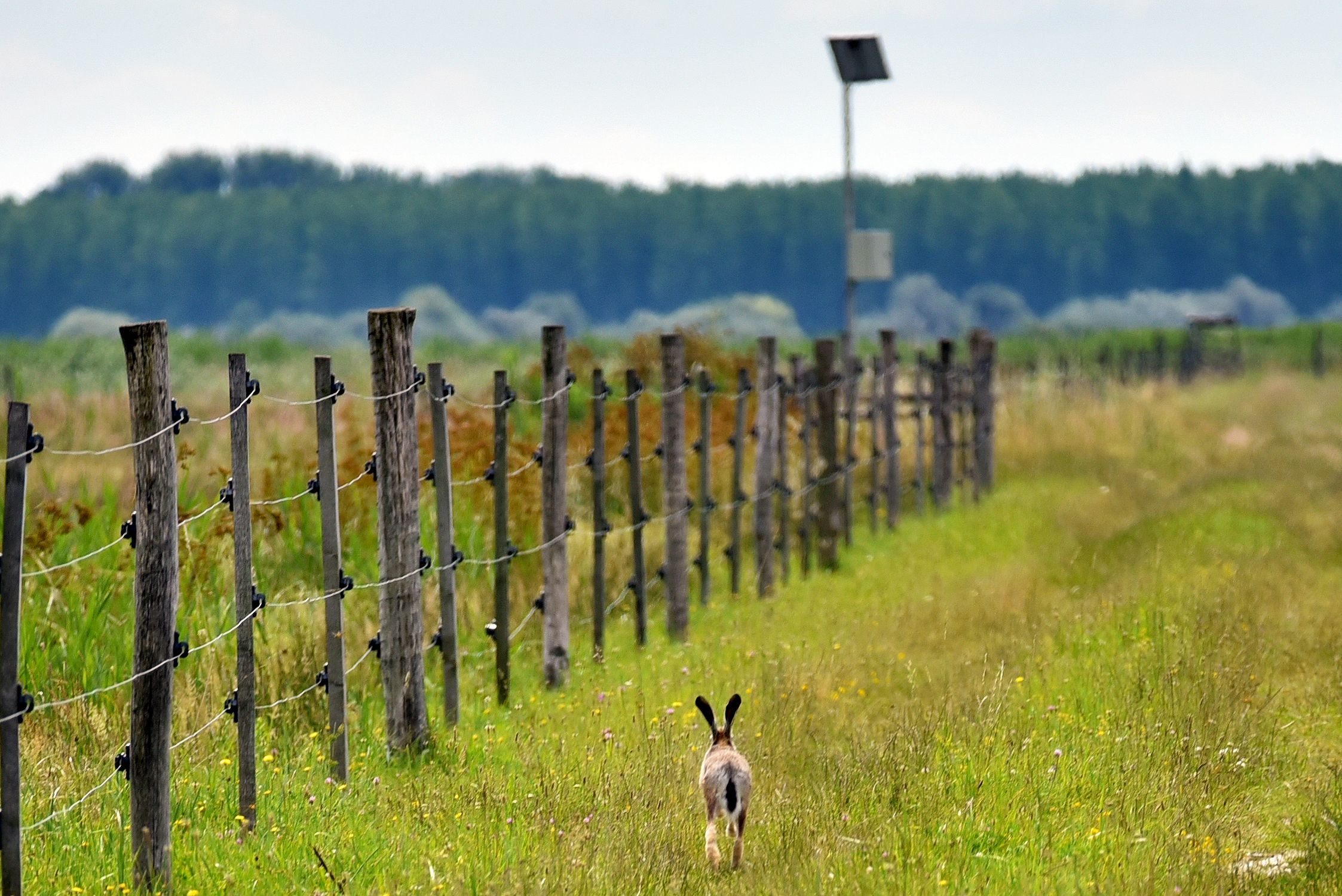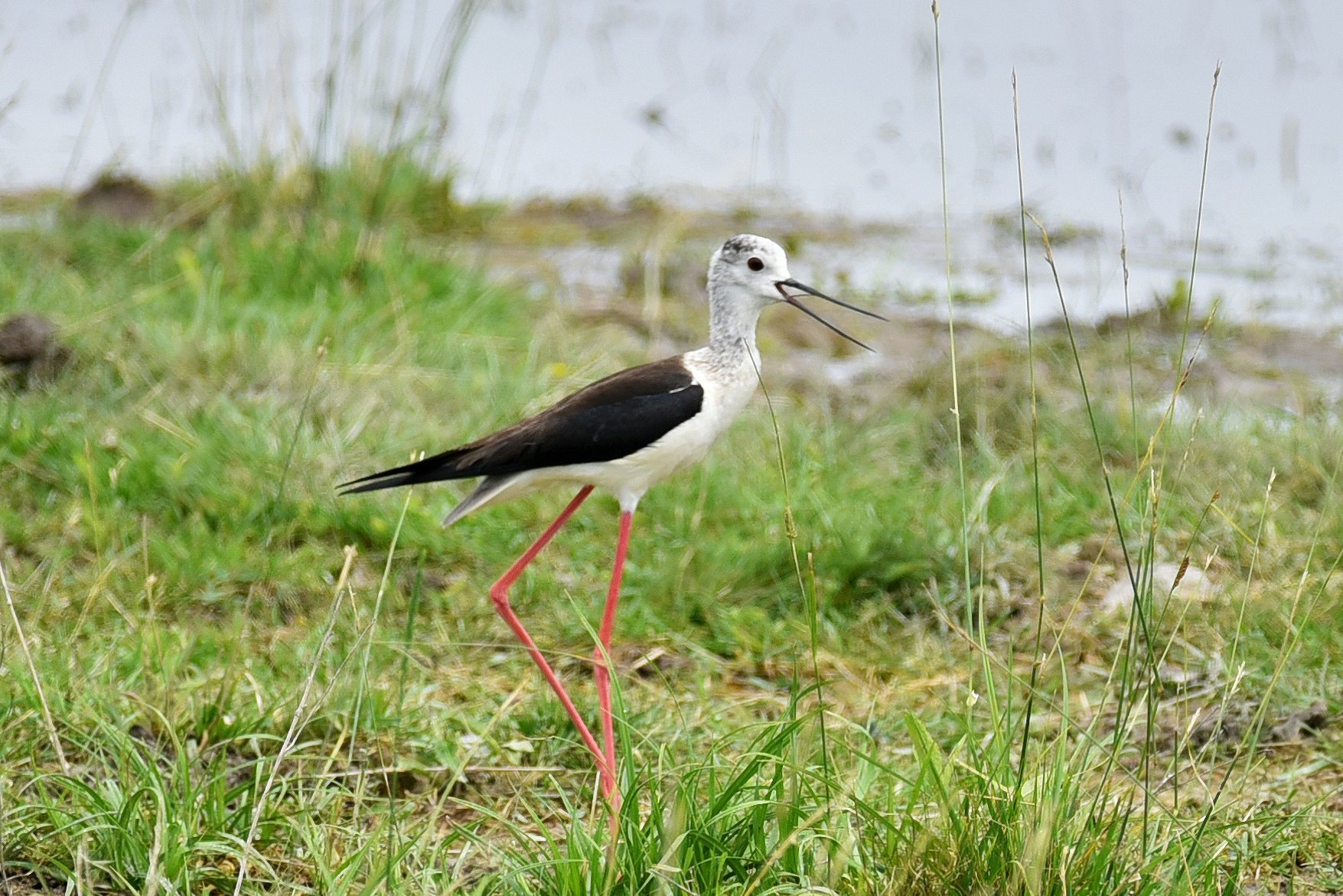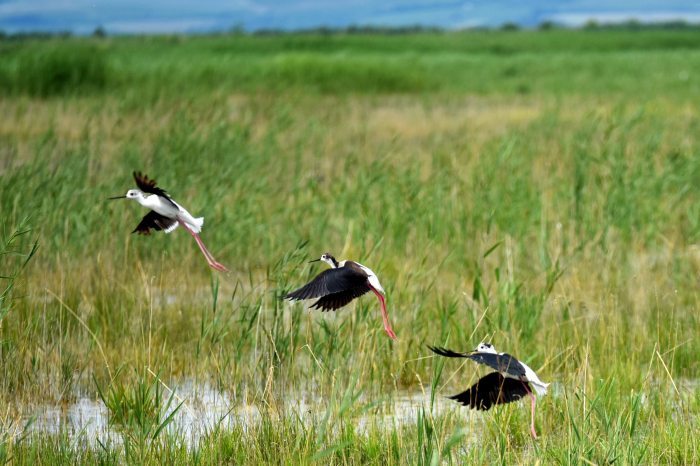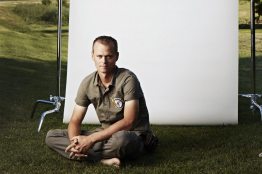In the past, people had no idea where the birds went in winter – a fascinating report from the Fertő-Hanság National Park (+ GALLERY)
Tree frogs slumber on the reed leaves, countless dragonflies chase each other among the cladiums. It's as if we've stumbled into István Fekete's famous novel, Tüskevár, except that our guide is not the old Uncle Matula, but a nature conservationist from the Fertő-Hanság National Park. Tamás Velkei's breathtaking report from the heart of the park.
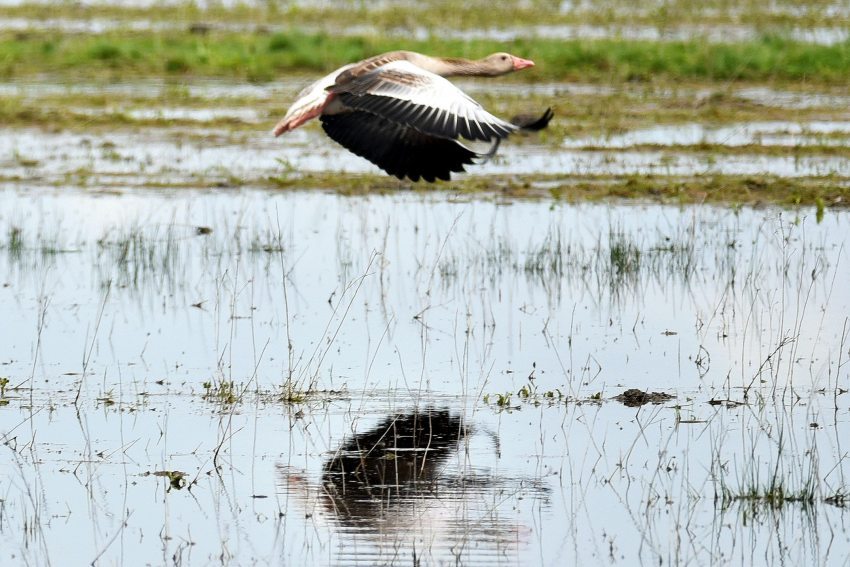
A yellow wagtail runs ahead of us, then flies up the nearest fence post when we get too close. A redshank goes into emergency mode when it sees us, shouting "teu-tu-tu" loudly standing on a stake protecting its chicks. A reed warbler sings in the reeds.
"Oh, wow! A garganey!" - suddenly bursts from my companion. When I look over to where Attila Pellinger, head of the Conservation Department of the Fertő-Hanság National Park Directorate, is pointing, the laying duck is "pretending" to be injured, offering us the chance to catch it, while its chicks swim to a safe distance. It flies up and down over the water, flapping its wings, trying to make us think it is injured, but when it notices that the chicks have hidden in the reeds, it swims peacefully away. The expert says he hasn't seen one nesting here for years.
We are in the middle of the nesting season, thousands of birds are crowding the reeds. Squacco herons are passing overhead, not very common around here, they don't spend much time here, just passing guests. We spot a flock of young bearded reedlings, so curious that they follow us for a while, flitting from branch to branch.
We pass a flock of black-winged stilts protecting their young, breaking out in a fierce squawk, trying to divert us from their young.
According to Attila Pellinger, this year a record number of breeding has been observed, with fifty pairs of black-winged stilt breeding in Hungary and over 300 in Austria.
This is a big deal because, he says, he has been working in the national park for more than three decades and there have been times when no pairs have nested in the area for ten years.
Every intervention generates change
The abundance of birds in the Fertő-Hanság National Park is not a coincidence, but the result of decades of systematic conservation work. The Fertő lake we know today was formed after drainage. Over the centuries before that, when the vast basin filled up, the Fertő and the Hanság became completely confluent. Water moved back and forth between the two areas. When the Hanság was drained, the Fertő would have been drained too, but at the end of the 19th century the bed dried up naturally and it was found that the soil was not suitable for farming.
The prevailing winds are now south-westerly, but it used to be north-westerly, so the wind often pushed the water into the southern basin of the lake, causing water levels to fluctuate by up to a meter. This is how the (fishing) village of Sarród came to be located where the Kócsagvár, the national park's new center, is now. "To prevent the water level from swaying, they raised the dam we are now passing," says Attila Pellinger, showing how the man-made landmark divides the area into two parts, the Fertő riverbed and the salt marsh.
In the early 1990s, a habitat rehabilitation program included the construction of a sluice on the dam, which allowed water to flow back towards the drained riverbed. As a result, there are many more birds there now than before the re-flooding.
The success of the project is even more valuable in the light of the fact that in more than thirty years, Europe's bird populations have declined by almost thirty percent.
One reason for this is intensive agriculture, the use of chemicals, soil cultivation and, for example, chemical mosquito control. Mosquito control is also particularly worrying because it kills not only the disease-carrying insect but also many other insects that many vertebrates feed on. Every human intervention in nature triggers changes in wildlife, and the outcome is up to us. The other reason is the wintering grounds of migratory species: the population explosion in Mediterranean and tropical areas and the impact of the people living there on nature.
The heron is the hardware, the behaviour is the software
The work in the Fertő-Hanság National Park can be considered as an etalon, with birds from hundreds of different species arriving each year. Here we need to stop for a word to clarify what exactly bird migration means. "Bird migration is not about birds moving south in winter, in fact it is the other way round. What we call bird migration has its origins in the end of the ice age: as the ice layer moved northwards, birds were able to occupy more and more land. As there is not enough food in central Europe in winter, birds migrate (back) to where they can find food. In other words, they fly further south to stay alive. This is what we know as bird migration," explains my guide.
Proof of this is that some birds still "bypass" obstacles that no longer exist because genetically they have a fixed route. The flight route is passed down from generation to generation.
There are countless patterns in migration, no two are the same, they are completely different in time and space. In species that live long, learning also plays a role. This group includes storks, herons, wild geese, swans, and birds of prey that can live up to 30 years or more. The Wisdom albatross, which breeds on an island in the Pacific, is about 70 years old and still nesting. The person who put a ring on it 50 years ago is no longer alive.
We can distinguish three main stages in the migration process: the spring migration to the nesting site, the autumn migration to the wintering area, and the so-called vagrancy period in between. The spring migration is very fast, because the birds need to get from the wintering site to the nesting site as soon as possible to ensure their reproduction. Autumn is a slower process, only the weather can hurry the birds along. The intermediate period is the "vagrancy" period, a time of learning.
The migratory behaviour of birds differs in many other ways. For example, the egret, which can be familiar from the protected area signs, no longer migrates south, but west, as far as Portugal. This may be because the ones that flew in the other direction did not survive the journey, while those that flew west did, and passed this 'route' on to their offspring. In other words, biological characteristics, and evolutionary mechanisms, can change even in the short term.
The easiest way to think of behaviour is as a computer software.
The hardware is the egret that runs the programs. The one that is successful is preserved and passed on, the ones that is not, kills the animal and then it can no longer pass that code on to its offspring.
Trying to survive in constant danger
For several species, the Danube is the dividing line for bird migration in Hungary. But there's a reason for everything. Take the cranes, for example: they arrived from the Baltic region to the Tisza area in Hungary. While cold winters were raging in Hungary, they gathered around Kardoskút, in the Southern Great Plain region of south-east Hungary. As the climate started to warm up and industrial farming methods became more widespread, the feeding area increased (thanks especially to maize) , so that the grain left in the fields after the harvest turned the area into a real Canaan for the birds.
"They don't gather on the Hortobágy because it would be so particularly good for them there, but because they need somewhere to spend the night to feel safe from furry predators, and the shallow waters of the fish lake systems are excellent for this," says Attila Pellinger.
We can also distinguish between short- and long-distance migratory birds, the latter including those that fly across the Mediterranean and the Sahara Desert. Once they reach the narrow coastal strip in the north of Africa, they gather strength before flying over the Sahara. "Unfortunately, I have to mention a growing problem here: as coastal countries see tourism as the future, they are constantly building in and paving over this narrow coastal strip where birds can feed before flying across the desert."
"All this seriously undermines the survival chances of long-term migrants. They'd need to store fat before the longer journey to keep up their strength. But they can no longer find food in harbours or hotels," says Attila Pellinger, outlining the sad reality.
In other words, the number of birds that nest in the Hungarian national park is not only dependent on the work of the park's staff.
The expert adds that birds that do make it to Central Africa can often fall prey to the growing, developing but extremely poor population there - hundreds of kilometres of nets trap the birds. In the Arab world, birds of prey are captured because they are status symbols; elsewhere, beautiful, colourful species are sold to pet shops. Many birds are killed during capture. For all these reasons, the numbers of long-distance migratory birds are steadily declining, some dramatically.
A tiny backpack may be placed on the bird
Experts draw their knowledge from bird markings. Yet just 150 years ago, most people had no idea where the birds disappeared to in winter. Towards the end of the 19th century, a Danish secondary school teacher had the idea of ringing the animals.
Back then, anyone who found a ringed bird would place an ad in the newspaper.
Of course, the system is now much more sophisticated.
Nowadays, rings are not only placed on the legs of birds, in the case of some waterfowl species lightweight, brightly coloured leg or neck rings are used. Today, even trackers can be fitted on the animals, with integrated power collection panels, SIM cards and antennas. The device resembles a small backpack the size of a matchbox. These devices are relatively expensive, although they can help you gather hundreds of pieces of feedback information on a bird.
Bird ringing is also necessary because professionals need to have knowledge of what they are trying to protect. Individual marking can reveal many things, such as how "loyal" pairs are to each other; for example, a greylag goose, when it loses its mate, does not look for a new one, but helps the community.
The greylag geese form a colony anyways, in which the young are cared for together. This is also known from marking: sometimes individual birds that have never been seen before appear in the grazing group.
It's also been observed that there are pairs that tend to 'drop off' their young, while at the same time there are pairs that take in those young.
While we walk talking, sometimes we can barely hear each other's words, as the birds grazing not far away from us chirp and honk. Attila Pellinger and I climb up to a high bird watch stand, from where we admire black-winged stilts, geese, and grey herons. Nearby, reed warblers sing that nest in the border zone between reeds and grassland.
More than 400 species of birds have been recorded in Hungary in recent decades (not all migratory, of course), and the number of species recorded in the Fertő-Hanság National Park is close to this number. There are also success stories: in the 1980s, it was still a rarity to see egrets in the area – but today, we pass not one group of them searching for food in the reeds.

